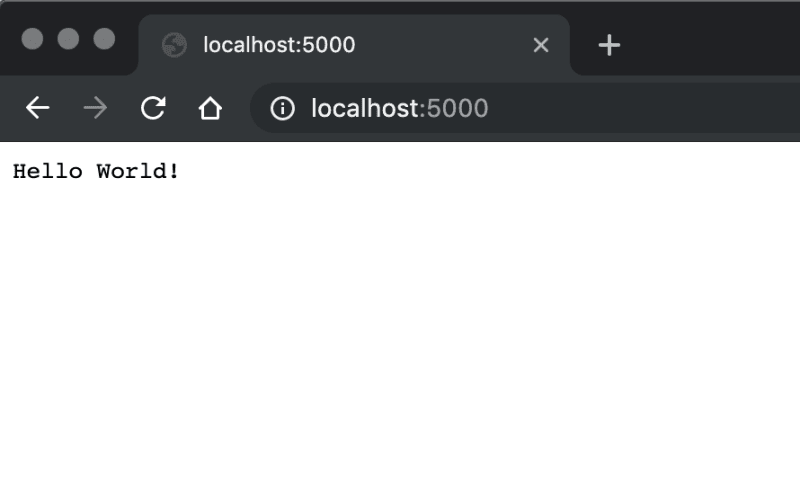Greetings!
Hi everyone, it's great to be back again! This blog is part one of a two-part series on Docker and Microsoft Azure. In Part 1, we will containerise a Hello World Python web app using Docker. In Part 2, we will learn how to build and push the container image using devOps pipelines on Microsoft Azure.
Prerequisites:
Before we get stuck in, here are some prerequisites:
Containers
Here is a useful link if you would like to have a quick 5 min intro to containers.
Docker
Docker is a set of platform-as-a-service products that use OS-level virtualization to deliver software in packages called containers. (Ref: https://en.wikipedia.org/wiki/Docker_(software))
It mitigates against the classic: "But it works on my machine problem!" and streamlines the development lifecycle by allowing developers to work in standardized environments using local containers which provide the applications and services. (Ref: https://docs.docker.com/engine/docker-overview/).
Containers are great for continuous integration and continuous delivery (CI/CD) workflows. Did I mention we can even integrate it with Azure? ☁️
You can get started on the Docker documentation here.
Docker Desktop
This blog assumes you have Docker Desktop Installed. To install Docker Desktop, you can use this link. I'm using my lovely Macbook Pro 💻 for this - hehe! 😉; but you can choose whether you want to download Docker for Mac or Windows.
For this tutorial, you will need Python 3.7+ by going to the following link.
Pip
You will also need the latest version of pip which is a recommended tool for installing Python packages.
To check you have the right Python and pip versions, you can use the commands:
python --version
pip --version
Now, onto the fun stuff! 🏄♀️
Step 1: Project Setup - Create a Project Directory
First, let's create a new project directory called hi-there-docker. Please feel free to call your project directory any name you want, but just remember to reference it throughout this blog.
Open up the project directory in your favourite code editor. I find Visual Studio Code works quite well if you're starting out.
Step 2: Project Setup - File Setup
Next, let's create a requirements.txt file in the directory; it is good practice in Python projects to have this file to manage packages.
Top Tip! 💡
If you are using Windows, you can create a function called 'touch' for the UNIX fans out there which enables you to use the touch command to create a new file in Windows Powershell. Enter the following command in Windows Powershell to enable this:
function touch {set-content -Path ($args[0]) -Value ($null)}
In the requirements.txt file, enter the package 'Flask==1.0.2', as we will need Flask to create the hello world application.
Finally, enter the following in the terminal to install the packages listed in requirements.txt.
pip install -r requirements.txt
Step 3: Python - Create a Hello World Flask App
I won't be going into detail on how Flask works, but you should check it out if you're interested.
We're now onto Step 3, let's move onto creating a new file called main.py.
In the main.py file, enter the following:
from flask import Flask
app = Flask(__name__)
@app.route("/")
def hello():
return "Hello World!"
if __name__ == "__main__":
app.run(host="0.0.0.0", port=int("5000"), debug=True)
This is a very simple app and has one route with 'Hello world'.
Step 4: Create a Dockerfile
Once that's complete, we can move onto Docker! Let's create a Dockerfile. The Dockerfile contains settings such as the base image for the container and Python version, as well as dependencies on build to produce the container image.
Create a Dockerfile in the root directory of your project folder and enter the following:
FROM python:3.7
COPY . /app
WORKDIR /app
RUN pip install -r requirements.txt
EXPOSE 5000
CMD python ./main.py
Your Dockerfile should look something like this:
Step 5: Let's Build the Image
Before we can build the image using Docker, let's confirm the Docker CLI is working by typing the following into your terminal:
docker --version
Also, check that Docker Desktop is up and running, there should be a cute little icon of the Docker whale on your desktop panel.
Now we are ready to build the image! 💿
You can tag the image with a name of your choosing, but let's use the name hi-there-image
Ensure you are in the root directory of the project and enter the following into the terminal:
docker build --tag hi-there-image .
🎉 You've built your first image using Docker and tagged it with a name - woohoo! 🎉
Step 6: Running the Image as a Container
Once the Docker image has been built, you are now ready to run the image as a container.
Our container will be called:
hi-there-container
And our image name is:
hi-there-image
To start the application as a container, enter the following into the terminal:
docker run --name hi-there-container -p 5000:5000 hi-there-image
🎈That's it! You are now running the image as a container! 🎈
Step 7: Go to the App
🥳 Now you can go to your app at http://localhost:5000 🥳
Final Step: Viewing and Managing Containers using the Docker CLI
#To display a list of running containers:
docker ps
#To stop running one or more running containers:
docker container stop [container name(s)]
#For example, if we wanted to stop running the hi-there-container, we can run the following command in the terminal:
docker container stop hi-there-container
#To remove one or more containers:
docker container rm [container name(s)]
#For example, if we wanted to remove the hi-there-container, we can run the following command in the terminal:
docker container rm hi-there-container
#To confirm that the container is no longer running, check that it is no longer in the list:
docker ps
😊 Congratulations, you have just built and containerised a Hello World App using Docker! 😊
🤔 What's next?
If you want to explore more on how to build and push the images using Docker as tasks within the Microsoft Azure Pipelines, watch out for Part 2 of this blog series. ☁️















Top comments (0)